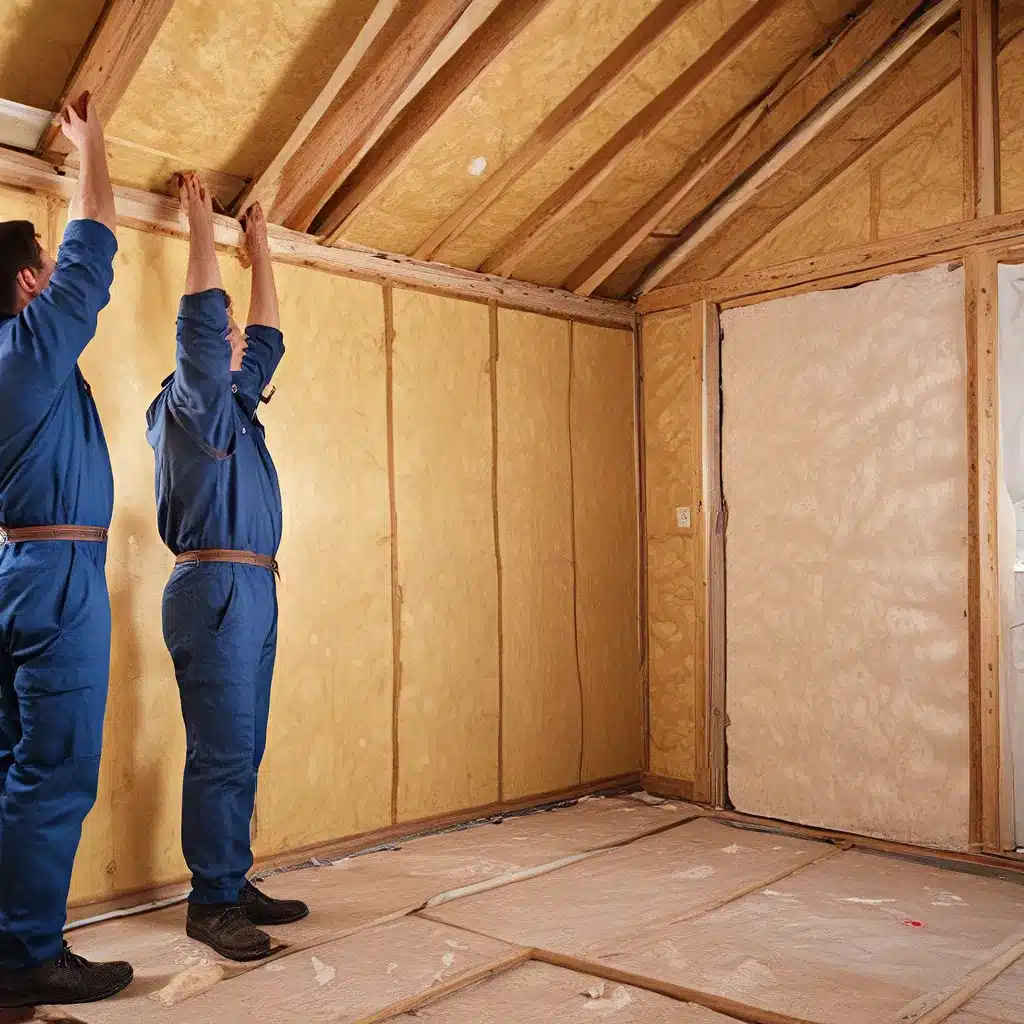
As a homeowner, I’m always on the lookout for ways to improve the energy efficiency of my abode. After all, who doesn’t love the idea of slashing their utility bills and reducing their carbon footprint? One area that’s often overlooked, but can make a huge difference, is insulation. That’s why I’m here to share my journey of optimizing energy efficiency through strategic insulation upgrades.
The Power of Proper Insulation
When it comes to home energy efficiency, insulation is the unsung hero. It’s the invisible barrier that keeps the hot air out in the summer and the cold air out in the winter, allowing my HVAC system to work more efficiently. And let me tell you, proper insulation can work wonders for my energy bills.
You see, before I tackled this project, my home was basically a sieve – heat and cool air would just seep right out, leaving me shivering in the winter and sweating in the summer. But once I got serious about upgrading my insulation, the transformation was astounding. Suddenly, my home felt more comfortable, my utility bills dropped significantly, and I could almost hear the sighs of relief from my HVAC system.
Evaluating Your Home’s Energy Efficiency
Now, I know what you’re thinking – “But where do I even start?” Well, my friend, the key is to conduct a home energy assessment, also known as an “energy audit.” This is essentially a comprehensive evaluation of how your home uses energy, and it can provide you with a roadmap for improvements.
The Department of Energy has some great resources to help you get started, including free tools and calculators to help you understand your home’s energy usage. You can also work with an energy assessor to get a detailed Home Energy Score, which will give you a clear picture of your home’s current efficiency and a list of recommendations to improve it.
Choosing the Right Insulation Upgrades
Once you’ve got a handle on your home’s energy performance, it’s time to start planning your insulation upgrades. The type of insulation you choose will depend on a few factors, like the climate you live in, the construction of your home, and your budget.
For example, if you have an earth-sheltered home, you might opt for straw bale insulation, which can provide excellent thermal mass and air-sealing properties. On the other hand, if you have a log home, you’ll need to pay extra attention to the design, construction, and maintenance of your insulation to achieve optimal energy efficiency.
No matter what type of home you have, there are a few key areas to focus on when it comes to insulation:
- Attic: This is often the easiest and most impactful place to upgrade your insulation, as hot air naturally rises and escapes through the attic.
- Walls: Ensuring your walls are properly insulated can make a huge difference in your home’s energy efficiency.
- Crawl Spaces and Basements: These often-overlooked areas can be major culprits for air leaks and heat transfer.
And don’t forget about other energy-efficient upgrades, like cool roofs, passive solar design, and energy-efficient windows and doors. These can all work in tandem with your insulation to create a truly optimized energy-efficient home.
Financing Your Insulation Project
I know what you’re probably thinking – “This all sounds great, but how am I going to pay for it?” Well, I’m happy to report that there are a number of options available to help make your insulation upgrades more affordable.
First and foremost, be sure to check out the federal tax credits and other incentives offered by the Office of Energy Efficiency and Renewable Energy. These can provide significant savings to offset the cost of your project.
You might also want to explore financing options through your local utility company or a specialized home improvement lender. Many of these programs offer low-interest loans or even grants to help homeowners like us make energy-efficient upgrades.
The Ongoing Benefits of Insulation
As I wrap up my journey of optimizing energy efficiency through insulation upgrades, I can’t help but reflect on the amazing benefits I’ve experienced. Not only have my utility bills dropped by a whopping 20%, but my home is so much more comfortable year-round. I no longer have to deal with those uncomfortable hot and cold spots, and my HVAC system is working way more efficiently.
But the real kicker? The positive impact on the environment. By reducing my home’s energy consumption, I’m doing my part to lower greenhouse gas emissions and fight climate change. It’s a win-win-win in my book!
So, if you’re like me and you’re looking to optimize your home’s energy efficiency, don’t overlook the power of insulation. It might not be the sexiest upgrade, but trust me, it’s worth every penny. Who knows – you might even end up with a few extra bucks in your pocket each month and a more comfortable, eco-friendly home. Sounds like a pretty sweet deal to me!

